10 Things to Consider When You Shop AV Receivers
While some people upgrade their AV receivers every time a new model comes out, most of us have to budget our money and save up for that all-important upgrade. When you’re spending your hard-earned money, you want to be sure you’ve considered everything before making a purchase. With that in mind, here are 10 things to consider when you shop AV receivers.
1. What’s Your Budget?
No joke, the first thing I ask people when they want to know what to buy is, “What’s your budget?” If they don’t give me a clear answer or a defined range, I stop helping. You have to know what you’re willing to spend, even if it has a high and low range. With a budget, you can limit your choices. Without a budget, you’re not really shopping, and you’ll end up spinning your wheels and frustrating both yourself and everyone you include in the process.
2. Is This an Upgrade?
For those buying for the first time, you have some clear, albeit difficult, choices. For those upgrading, however, you want to determine whether you’re going to sell your old equipment and use that towards the cost of a new model, or whether that older receiver can be used for some of the things you want the new receiver to accomplish (like powering a second zone, or distributing audio to another room in the house). If you can sell your old gear, then you may be able to step up even further along the audio “food chain” to get a more advanced receiver.
3. Are You Planning to Upgrade Your Speakers Anytime Soon?
Similar to #2 above, if you are planning to upgrade your main speakers anytime soon, you’ll want to take into account the additional power requirements you may need before you shop AV receivers. In general, I recommend upgrading speakers first, however sometimes you can gain too much benefit from an electronics upgrade (HDMI, streaming audio, etc) to pass it up. Even if you don’t have plans to upgrade your speakers, unless you already own your favorite speakers, you might want to leave room for an eventual upgrade. Buying an AV receiver with a bit more power than you think you might immediately need isn’t a bad idea—and it won’t damage your current speakers—especially if you get a system that includes a feature for setting the max volume.
4. How Many Inputs Do You Need?
While even entry level surround receivers are coming with four or five HDMI inputs, it may be that you need more. Don’t bring home an AV receiver only to discover that you can’t get your new AppleTV connected to it without unplugging your Roku (this actually happened to a friend of mine). Be sure to when you shop AV receivers with enough inputs for your needs. Before you write this off, consider the following list of components that might be connected to a typical teenager-laden household:
- Blu-ray player
- DISH Hopper DVR
- Xbox 360 (soon to be Xbox One)
- Playstation 3
- AppleTV
- Roku
- HD media server (Kaleidescape, ReQuest, Fusion Research)
- HD camera, laptop, iPad, or other AV source device
5. What Streaming Audio Features Do You Want or Need?
With the myriad of streaming media options available in new surround receivers, it is a good idea to take your time and consider how important these features are to you. You also want to know whether you’re more likely to stream DLNA content from a connected computer, or send audio from an iOS device via AirPlay (then again, some receivers can do both!) What’s really amazing is that there are AV receivers on the market today under $400 that include AirPlay support. Most desktop AirPlay speakers cost nearly that much (or more). Streaming audio typically implies a wired or wireless network connection, but it could also encompass USB audio capabilities. If you want to be able to connect a hard drive with your favorite music, that’s something to consider as well. Not all surround receivers will accept a USB connection to a mass storage device.
6. Do You Need Analogue Video Upconversion?
Analogue video upconversion is the conversion of analogue video signals to HDMI. It can also refer to converting analogue composite video to component, but its main use now is for getting legacy analogue video from DVDs and similar sources to your brand new HDMI television. This is a big deal if, for example, you wall-mounted said TV with a solitary HDMI cable running to it from your AV component shelf. If that’s the case then you really need to make sure all of your sources can convert to HDMI and make it to the television. Video upconversion is the feature that provides this functionality. You will typically have to pay around $600 for a new AV receiver with analogue video-to-HDMI upconversion, but you can occasionally pick up refurbished models for under $300. If this is your delineating feature, don’t miss an opportunity to save that kind of money when those deals pop up!
7. Do You Need a Second Zone?
This is one of the more important questions when shopping for an AV receiver. If you want to be able to send audio to a second room or to your back yard, then you’ll undoubtedly want a discrete second zone. With that comes the question of whether you need amplification or simply just a discrete line output for the second zone. With many AV receivers, you get the option to assign the Surround Back channels to the second Zone source for amplification of that Zone. This is great for when you only have a 5.1 surround room anyway, and you want to use the extra two amplifiers for something more practical than simply weighing down your AV cabinet.

Both the Denon Remote and Yamaha Controller apps let you easily control the volume and source of each of your Zones
Some second zones features can also be more advanced than others. For example, some receivers allow you to automatically activate the Zone 2 amplifiers when the Zone is powered up by a remote. Speaking of remotes, some receivers come with a dedicated Zone 2 remote control. Most receivers will not allocate DACs (Digital Audio Converters) to send digital audio sources to the Zone 2 outputs. That means you are likely going to want to connect the analogue audio outputs of many of your sources to the receiver so that you can send audio from those devices through to the second zone. Still, some flagship surround receivers will allow you to send digital sources—and that’s one of those conveniences you pay for.
Another thing to be aware of is that most second zones on budget AV receivers don’t provide for much in the video department. Flagship products, on the other hand, allow you to send a discrete source to a second Zone using a dedicated HDMI output. That’s a fairly sophisticated sand powerful system. Properly, wired, you could support a full 5.1 or 7.2 system in your theater and a stereo system (or more) in your bedroom—all from one box.
8. Wired or Wireless Network Capabilities
We touched upon this earlier, but you can find receivers with both wired and wireless network connectivity. If you’re nowhere near a router, switch or hub and you want to connect you receiver to the network, then you might want to look at something with WiFi support built-in. It’s becoming more and more accessible and popular. On the other hand, it’s not exactly a deal-breaker if you want to use your money to get a basic Ethernet-over-powerline system to bring your network right to your AV equipment. Given all of the components that want to be connected to the Internet, it might actually make more sense in the long-run.
In addition to considering what you can play back on your AV receiver, you also want to note whether or not it has an associated iOS or Android app to facilitate selection of streaming media sources. Many manufacturers, like Yamaha, Denon, Onkyo, Marantz, Harman Kardon and others, provide fairly sophisticated apps to let you select your networked music, stream tunes from Internet radio and even control connected components like Blu-ray players. This kind of perk is something that really updates your home audio experience into something far more than what was available even just a few years ago
9. Front Panel Connections
This is subtle, but if you tend to show a lot of home movies or you have friends who bring their gaming systems over to play Xbox or Playstation games, then a front-located HDMI or MHL input may be a very big deal to you. After all, who wants to go around the back of a receiver every time you wish to connect a new source device temporarily. The only other option is to leave a connected cable dangling and coiled up, but even that isn’t nearly as convenient as a front-mounted connection. Check out those front inputs, and observe what type they are (USB, HDMI, MHL, analogue audio, etc.)
10. Pay Attention to the Little Things!
Buying a new AV receiver is exciting—so exciting that you may gloss over something important. You especially need to think about how you want to use the system. For example, some surround receivers allow you to continue switching HDMI inputs on the receiver when it’s powered down into Standby mode. That’s exceptionally cool if you just want to use the TV speakers for an afternoon news broadcast or something that you don’t want to power up your entire system for. Yamaha has this feature and calls it HDMI Standby Through Mode, but other manufacturers such as Sony offer it as well.
There’s far too much to consider for a comprehensive list of everything, but I hope this was helpful. If you’ve got other suggestions for what to consider when shopping for an AV receiver, drop us a line on Facebook or comment below and fill in what we might have missed.

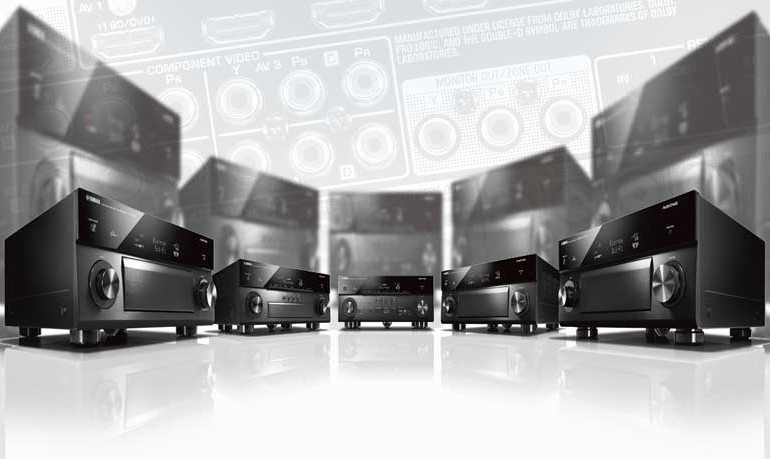

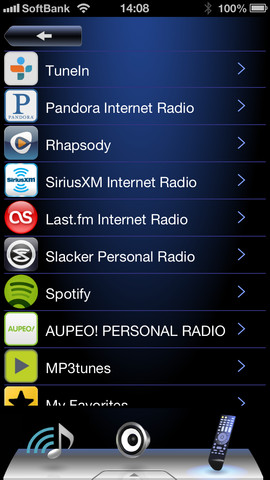
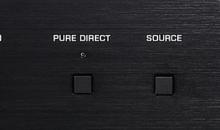
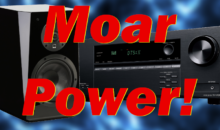
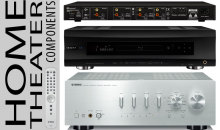
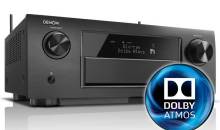

Any advantage to receivers with so-called equal channel power?